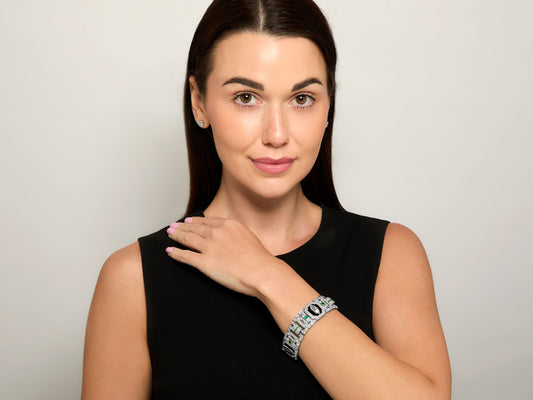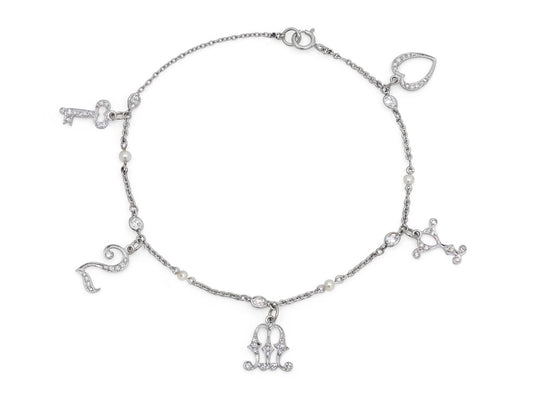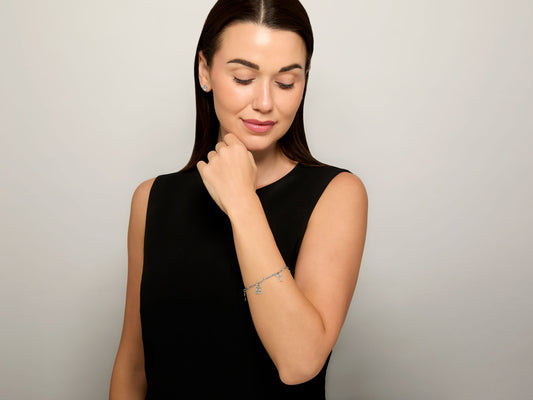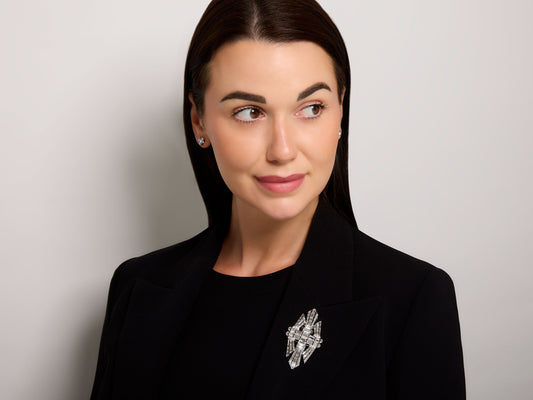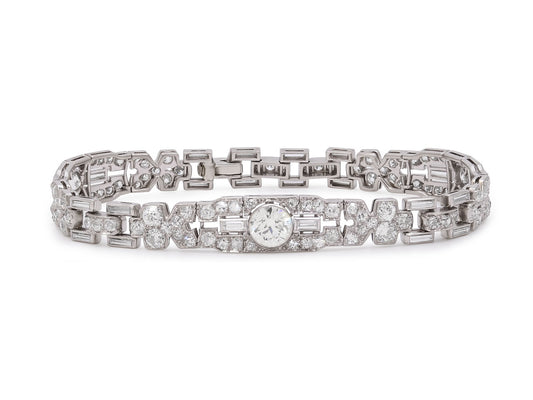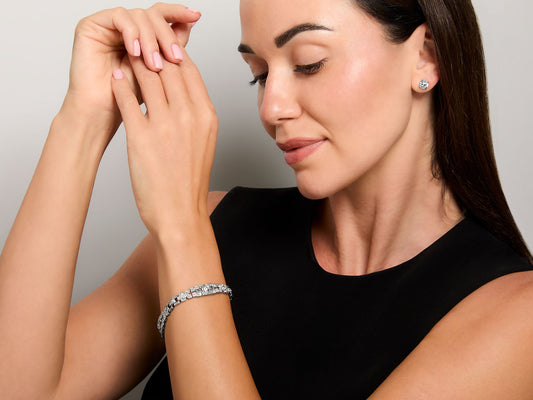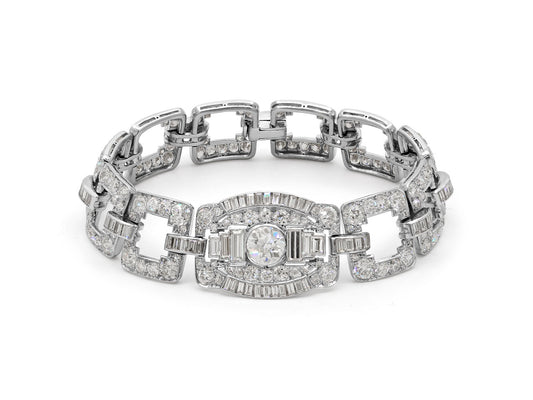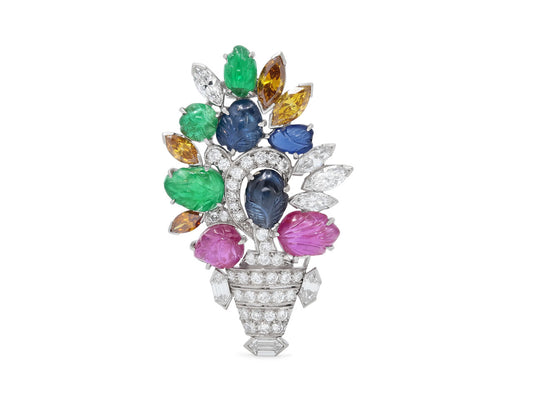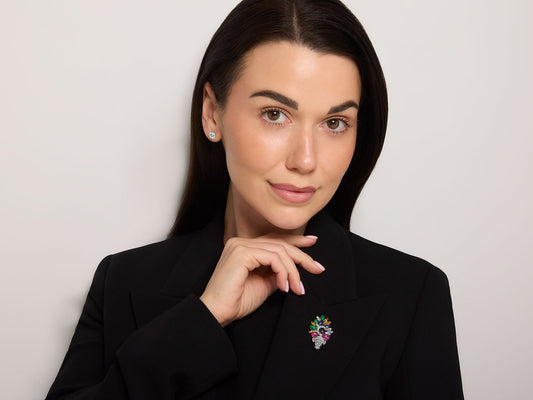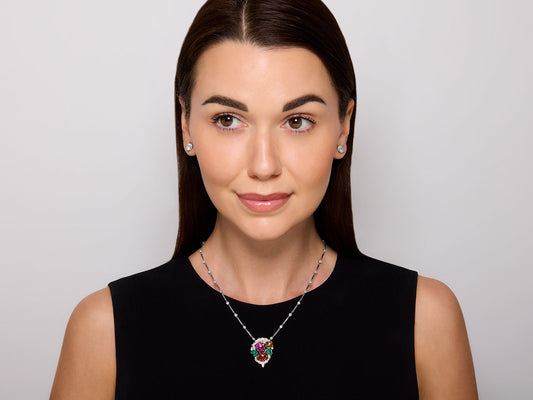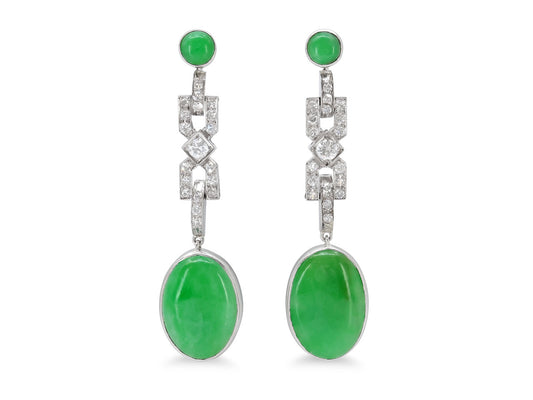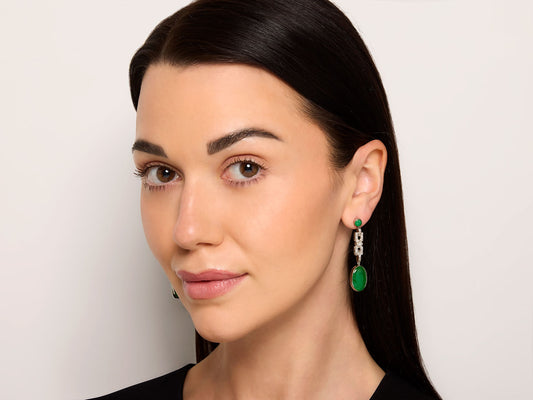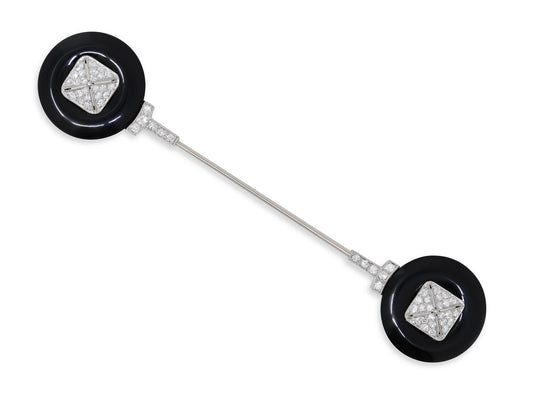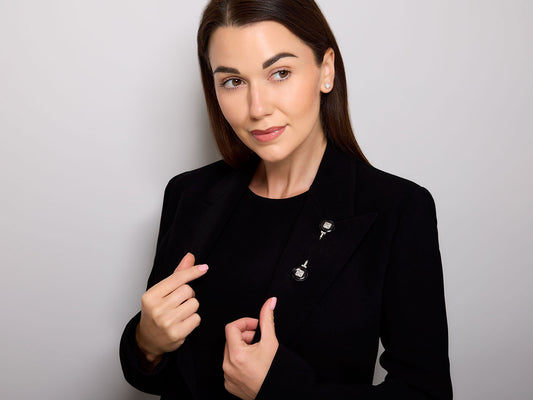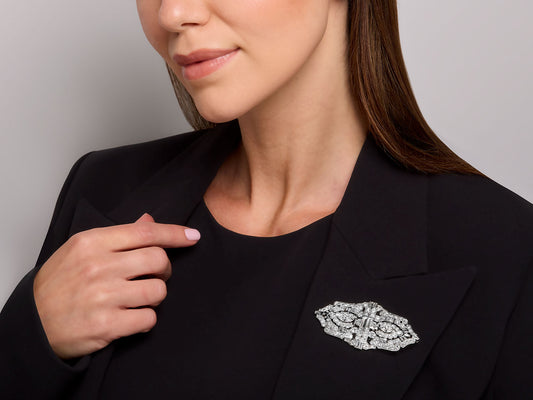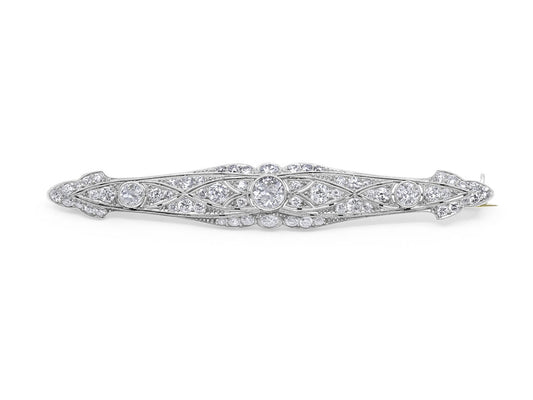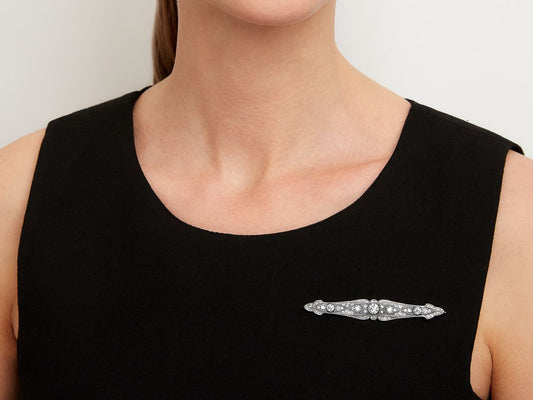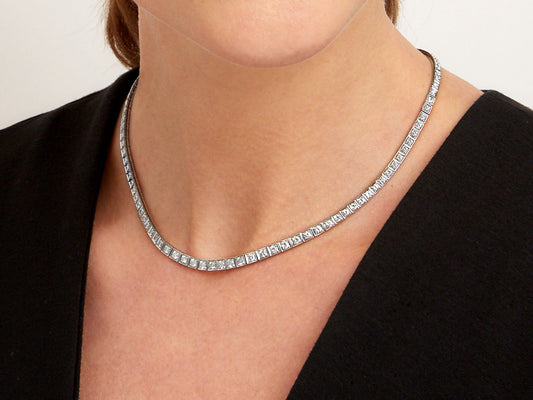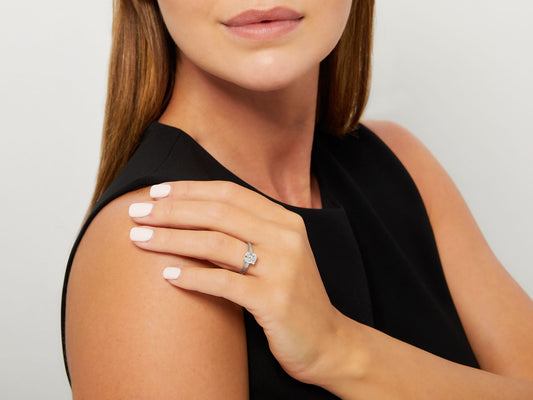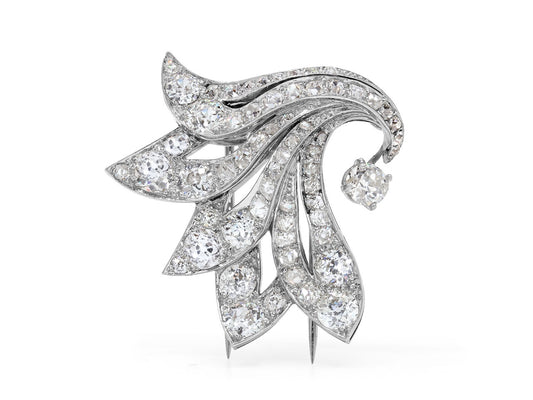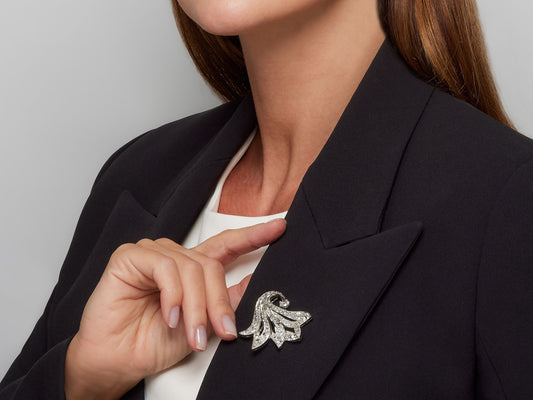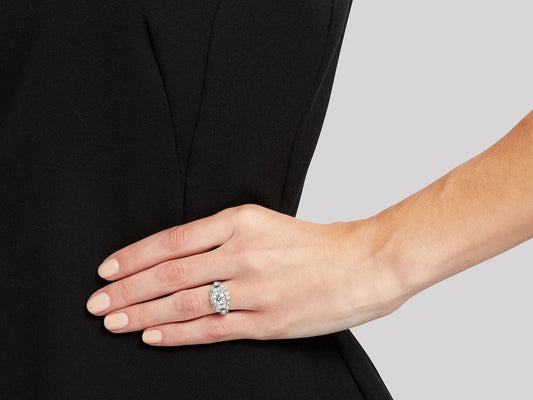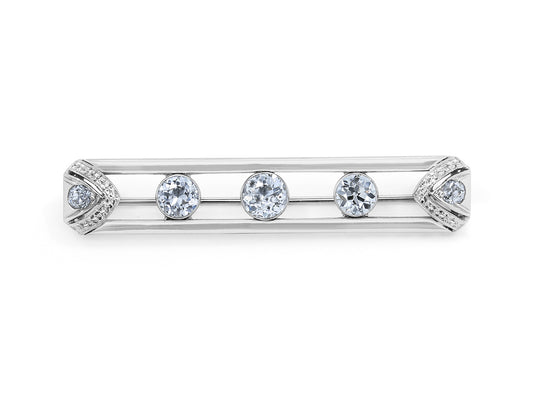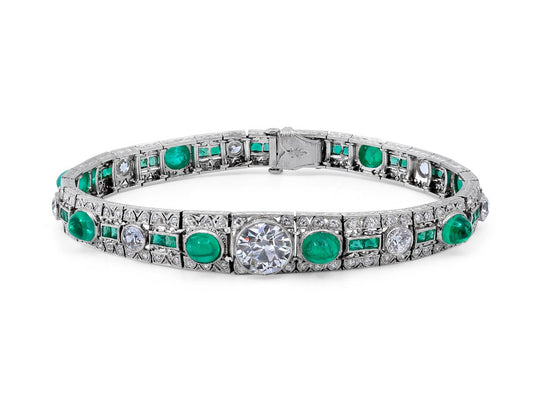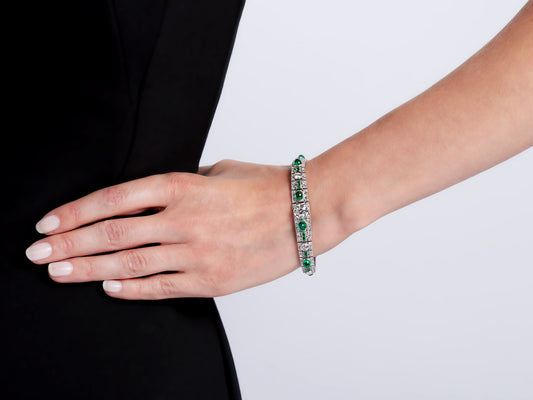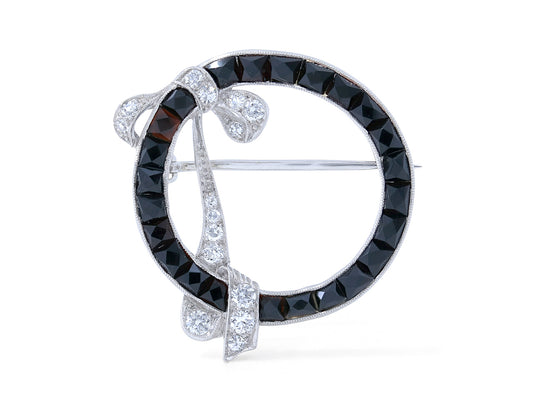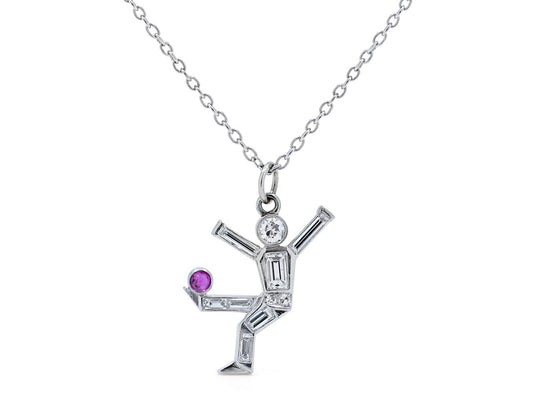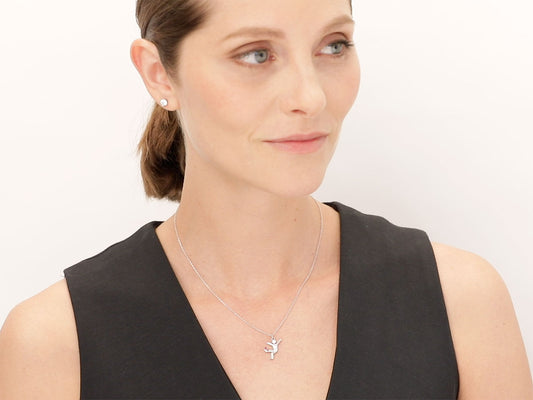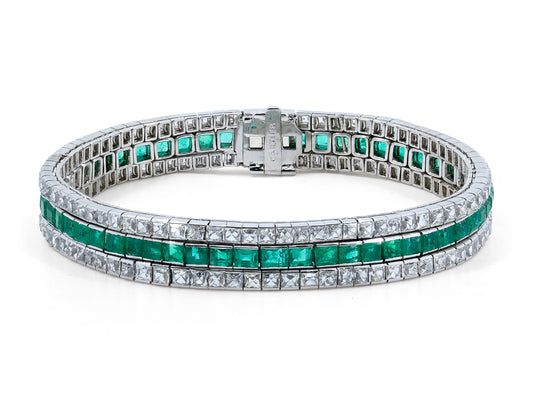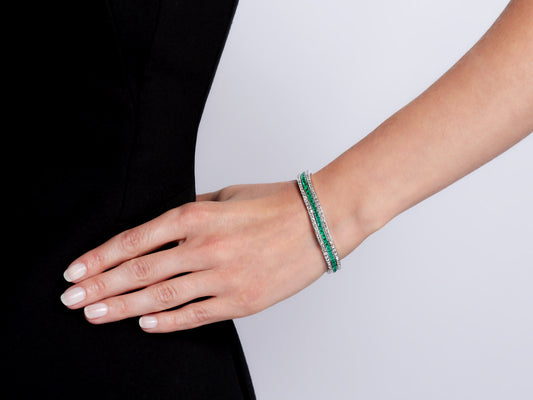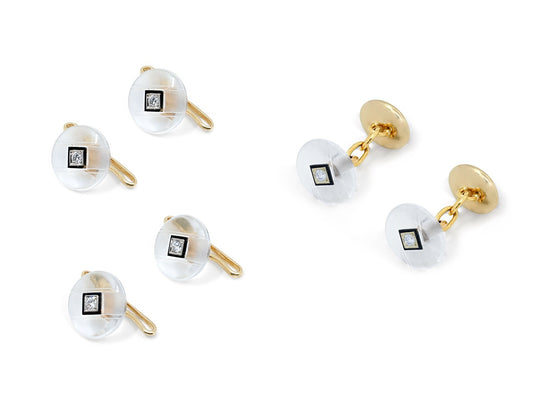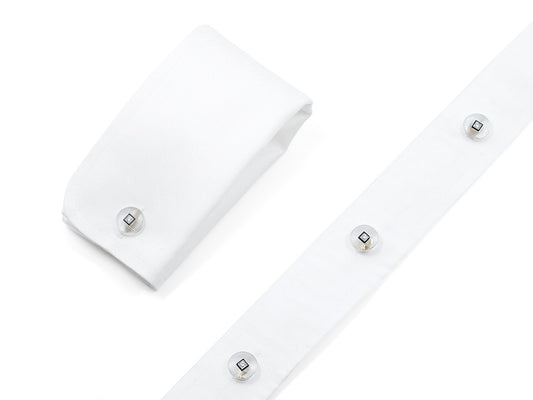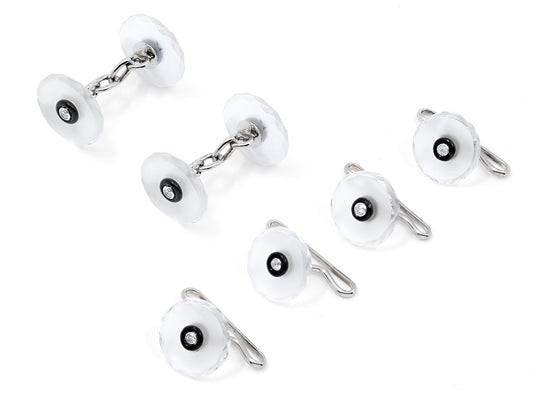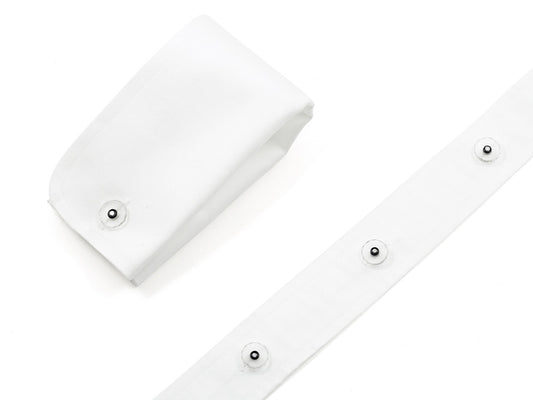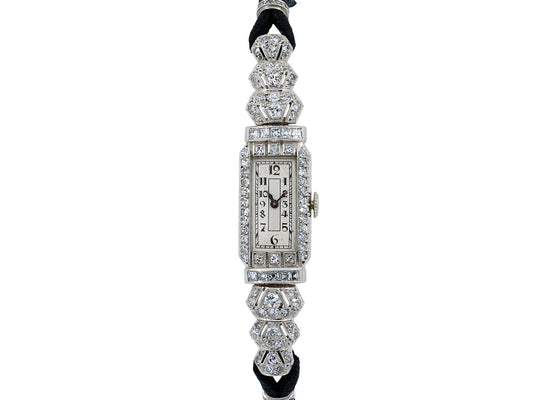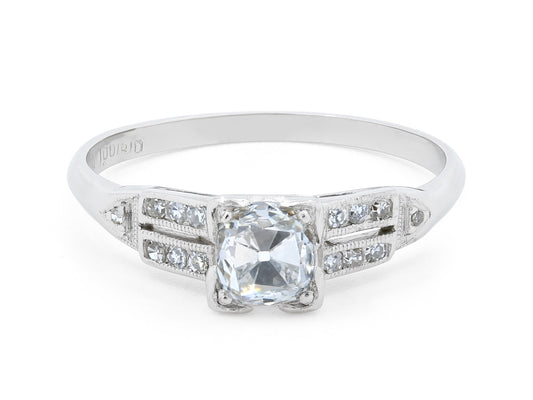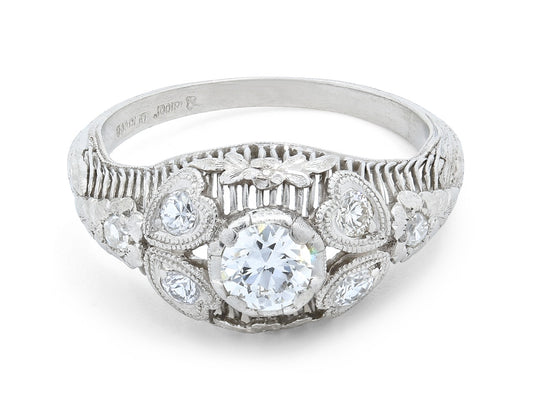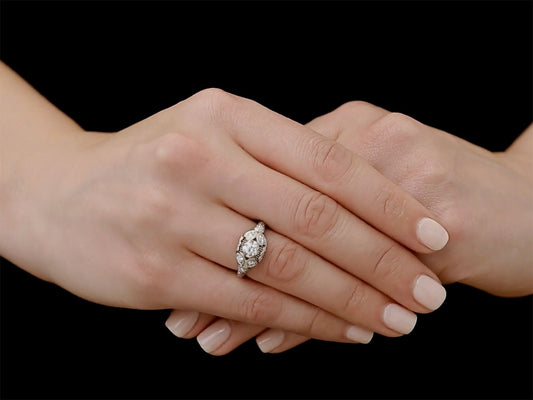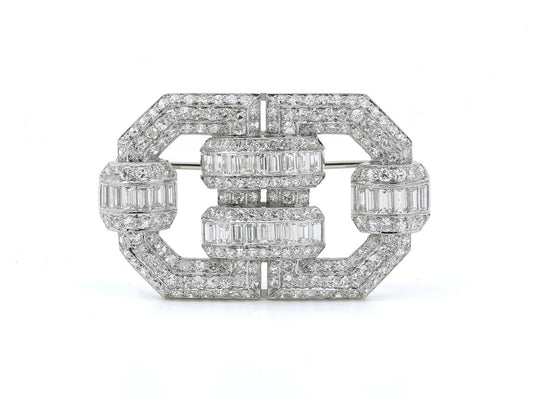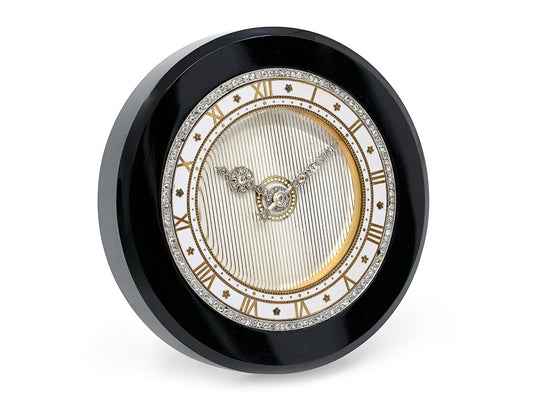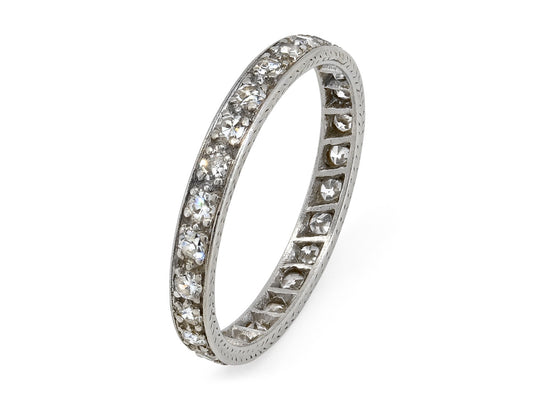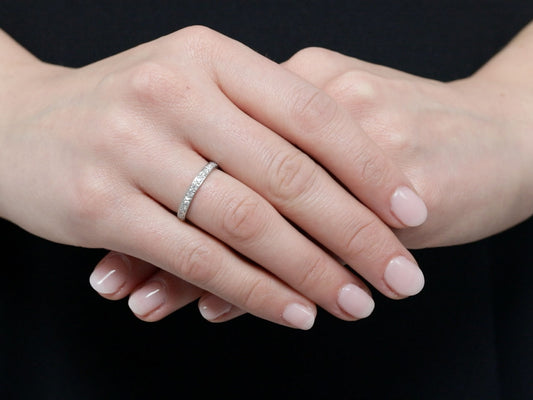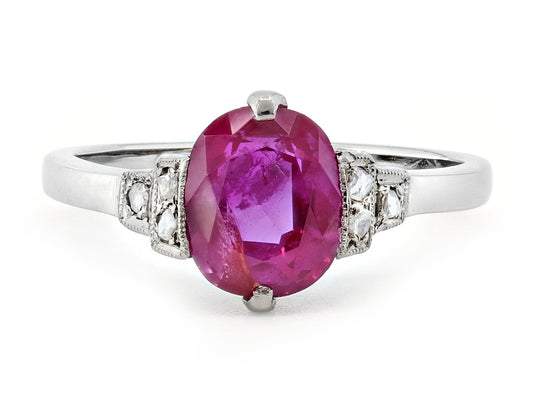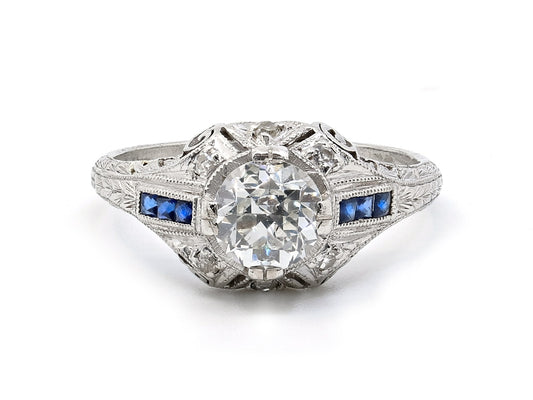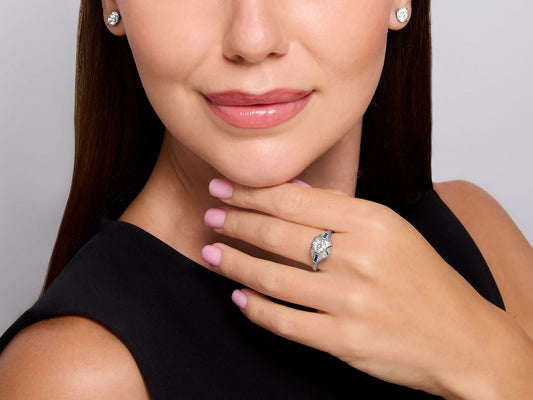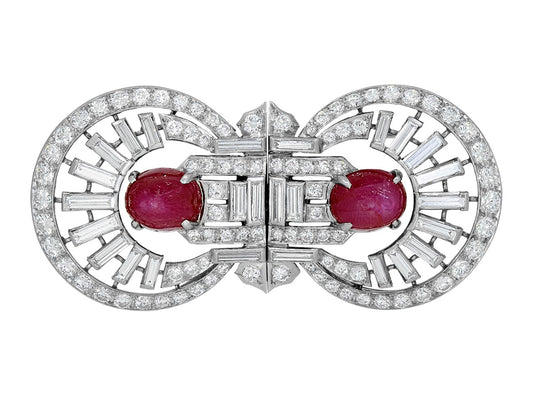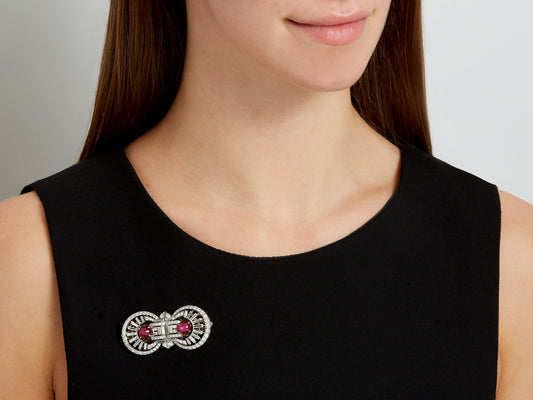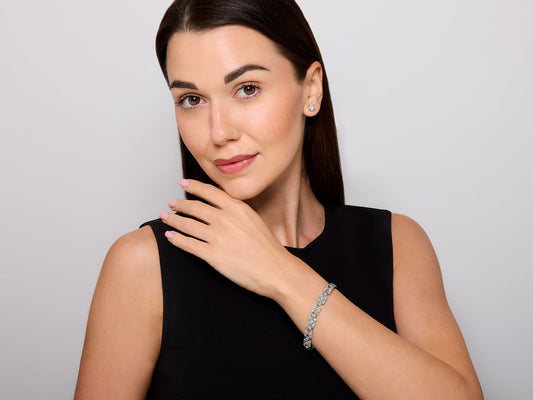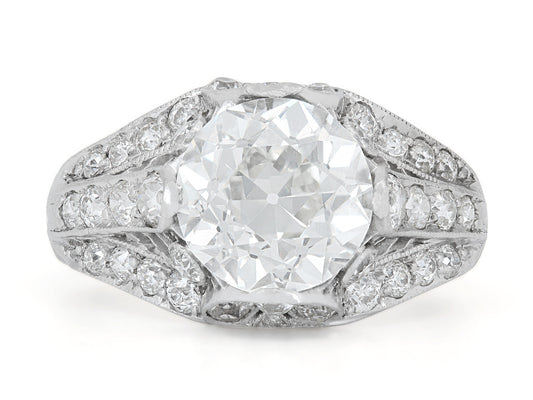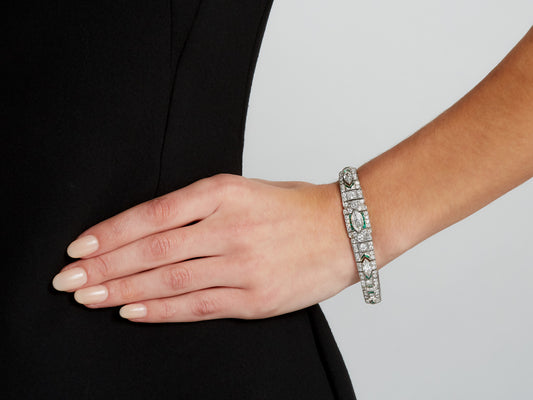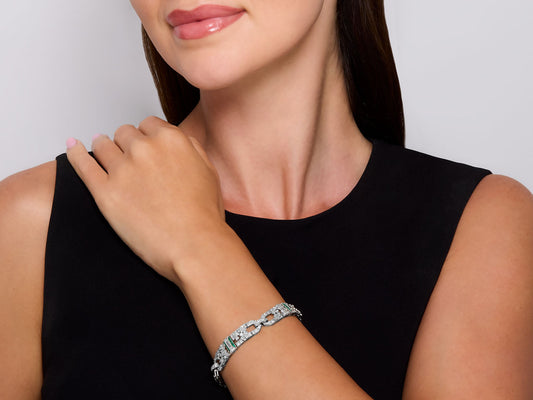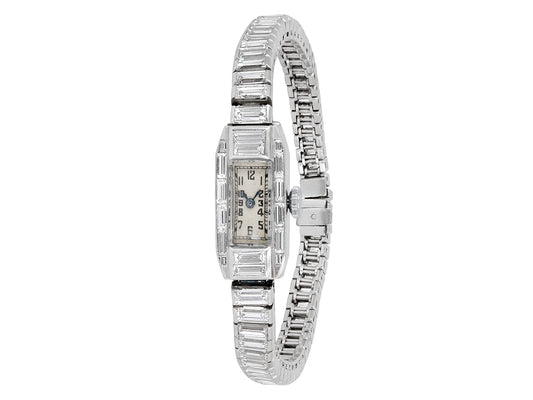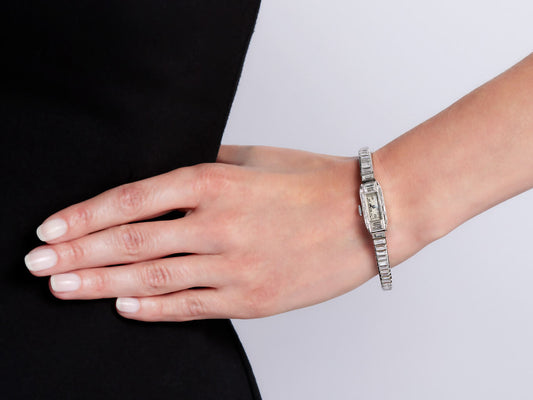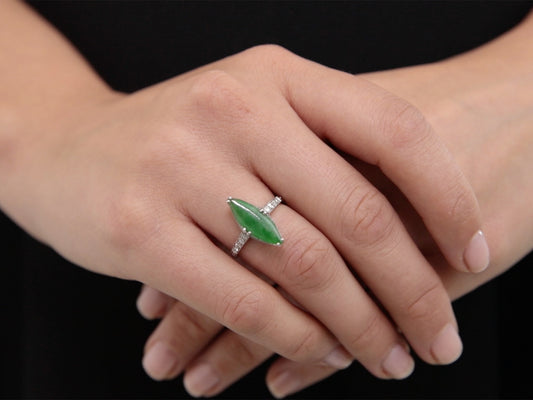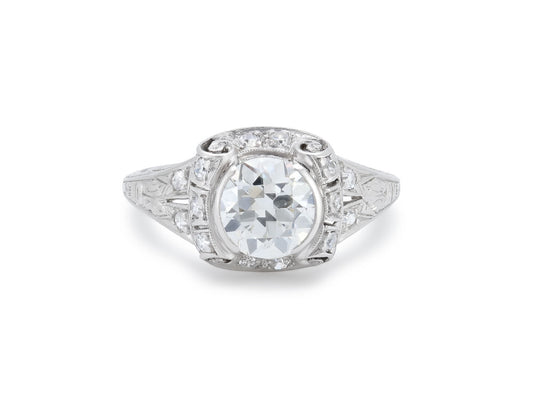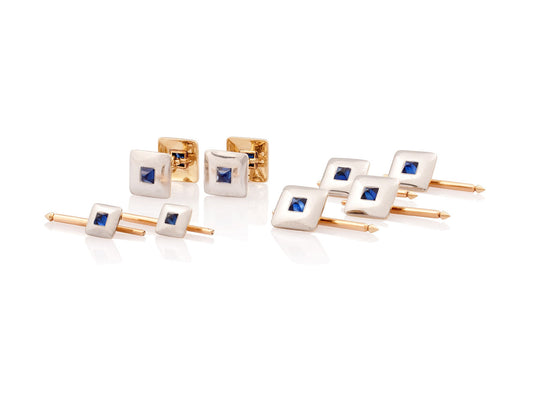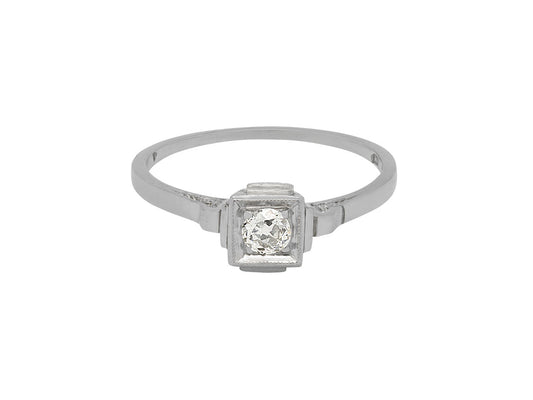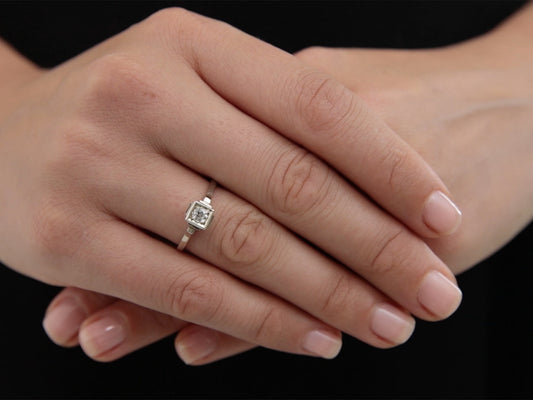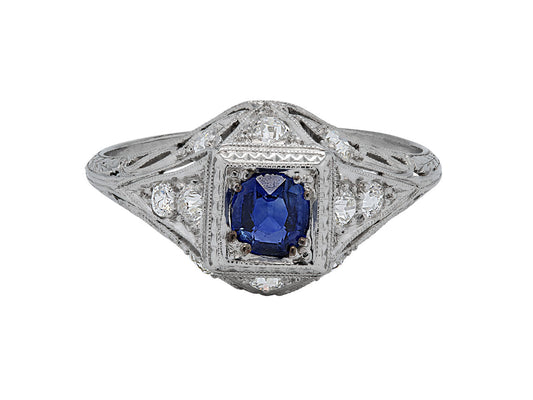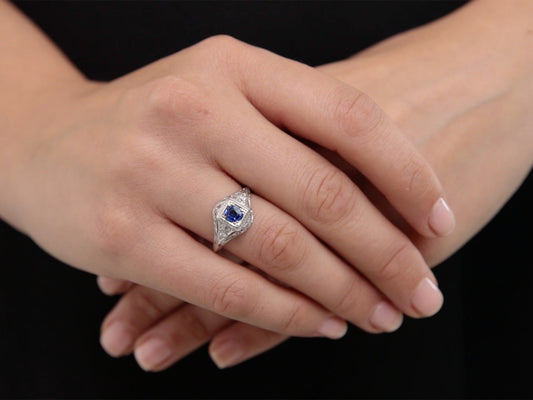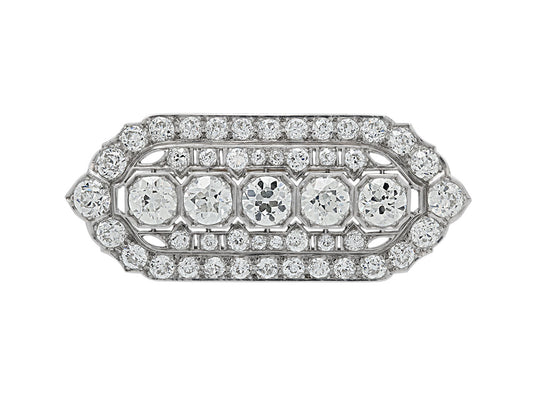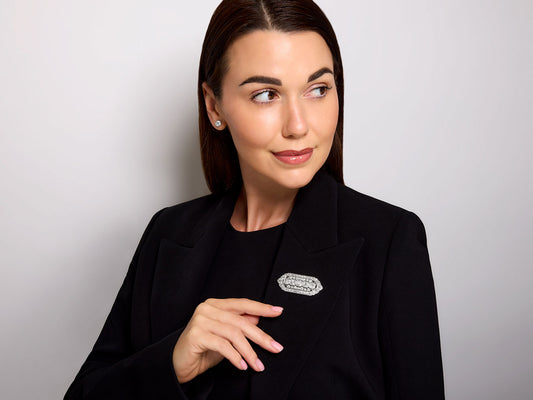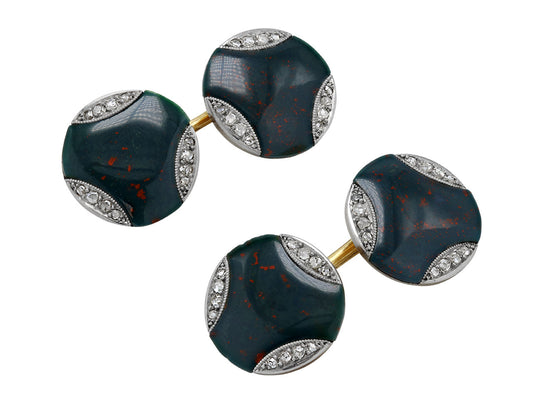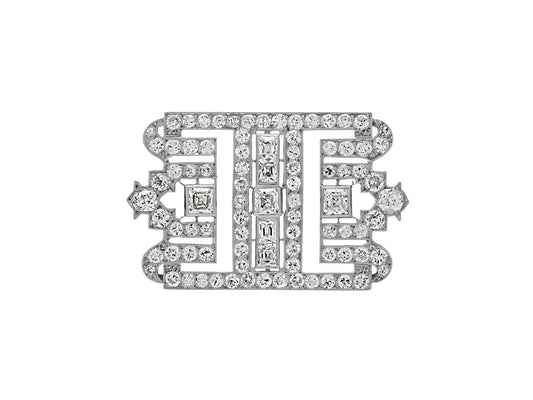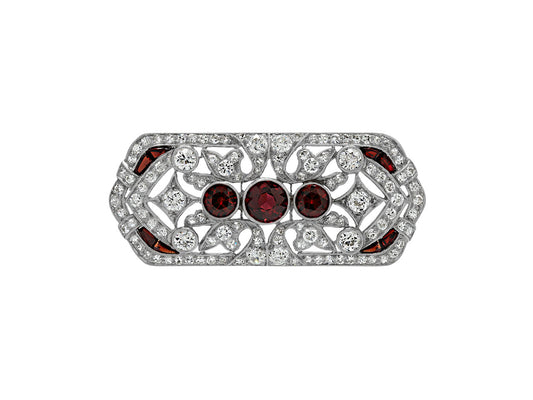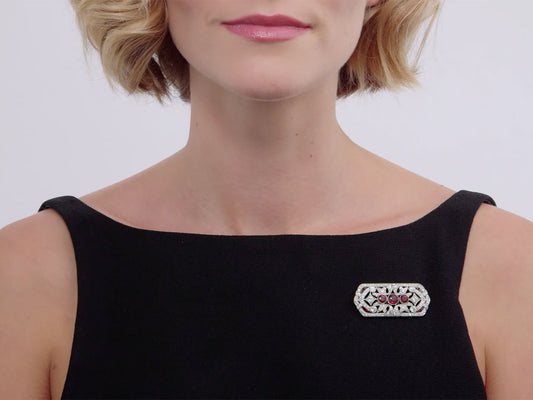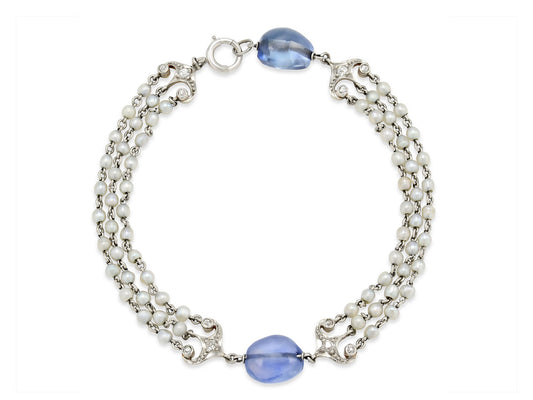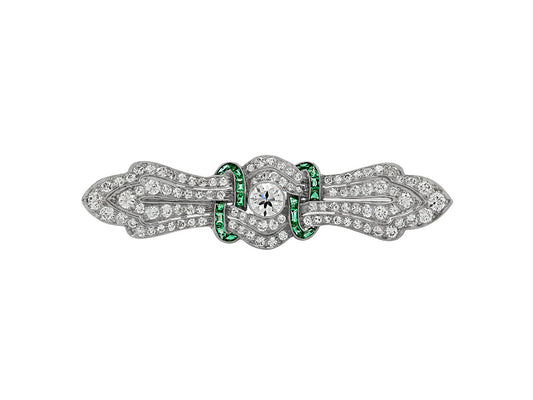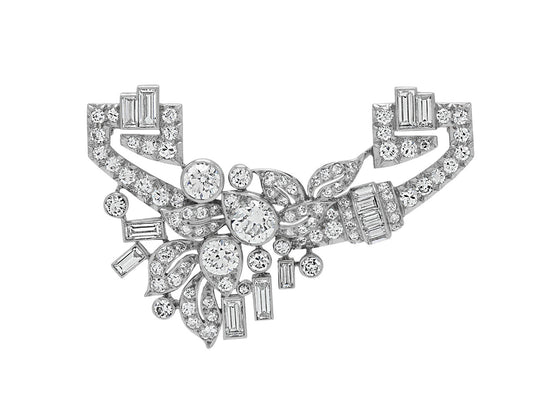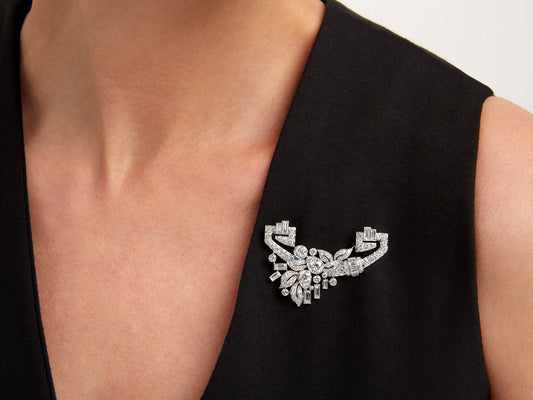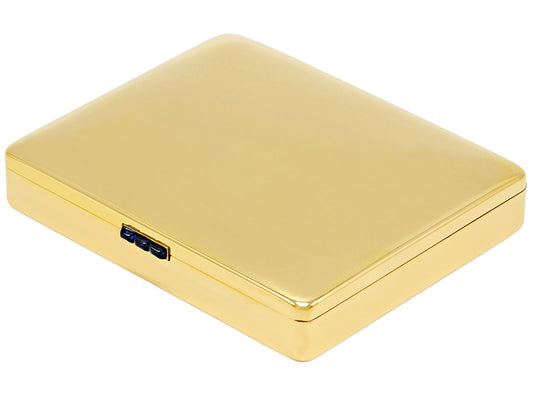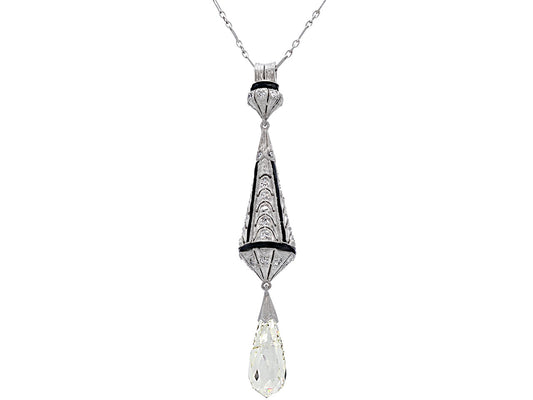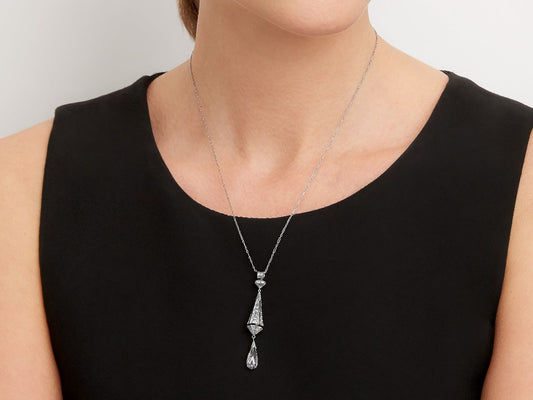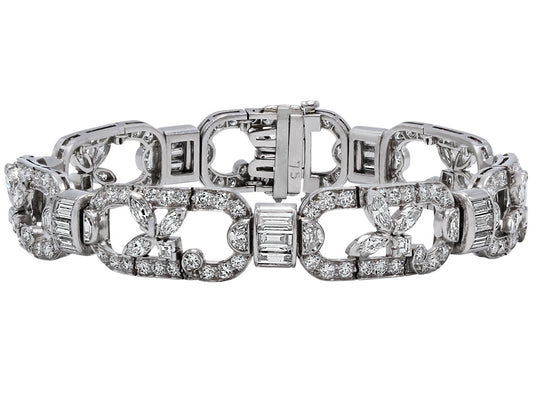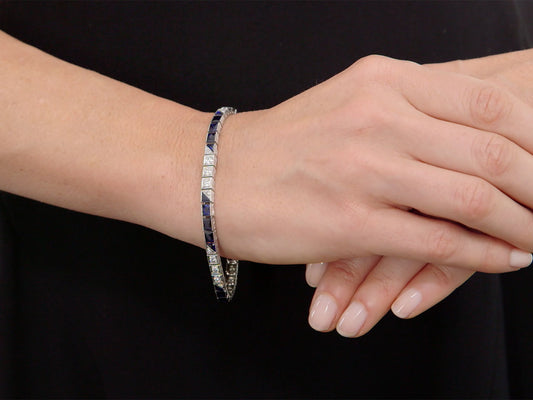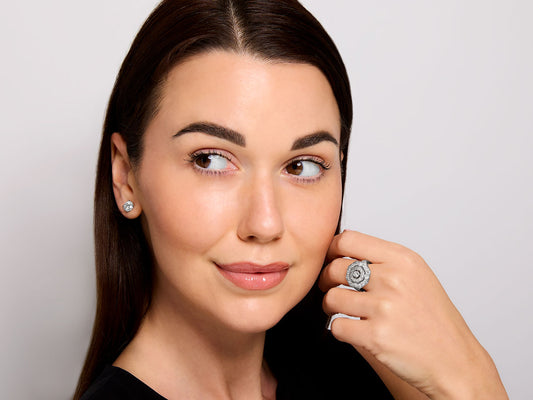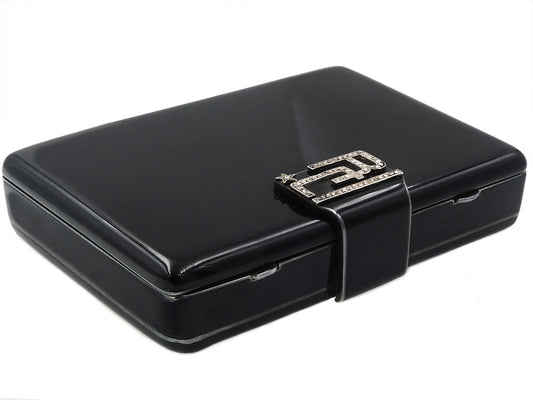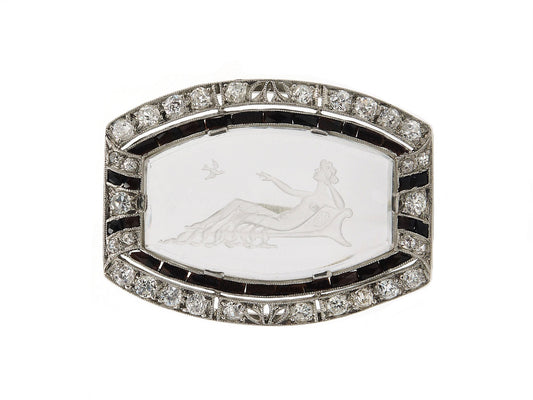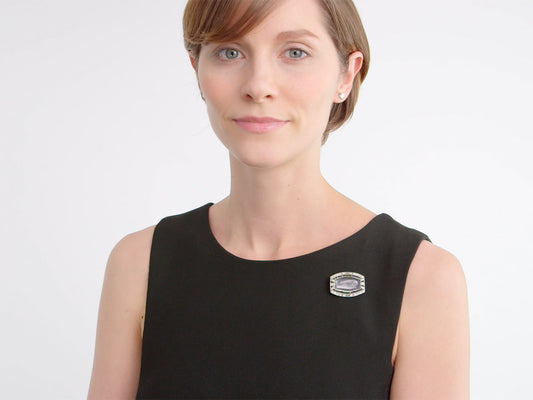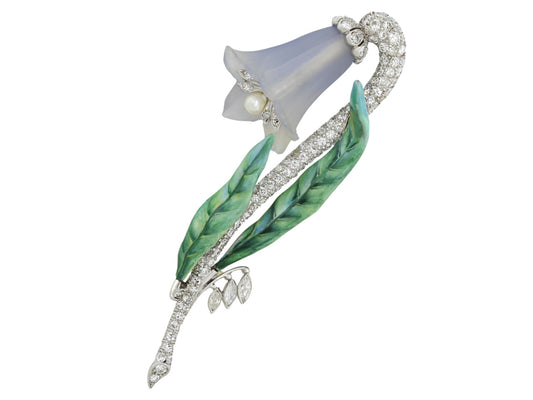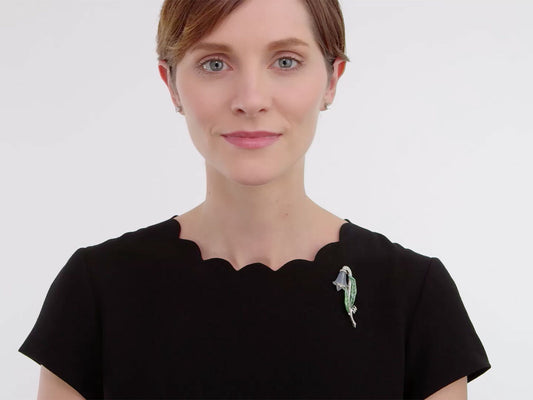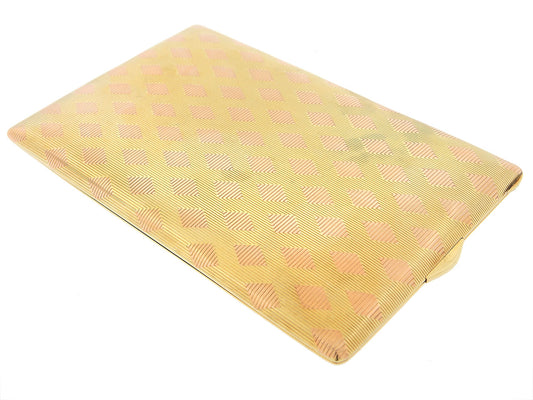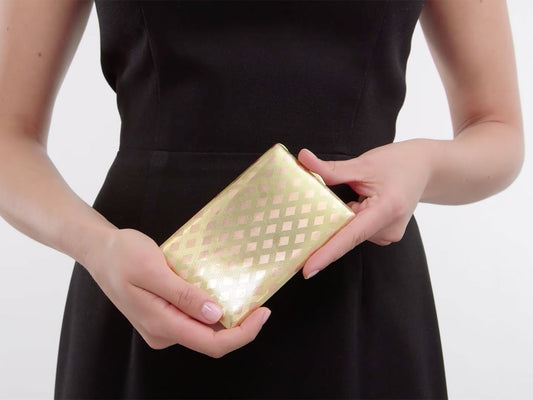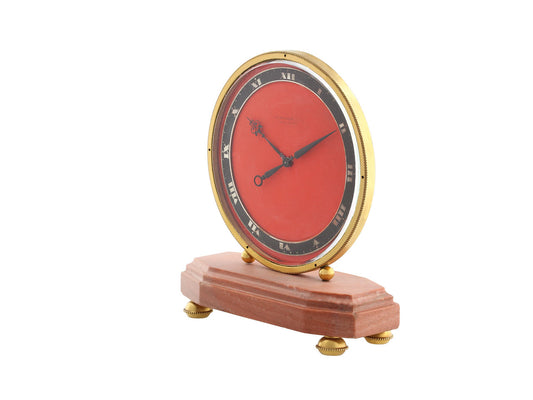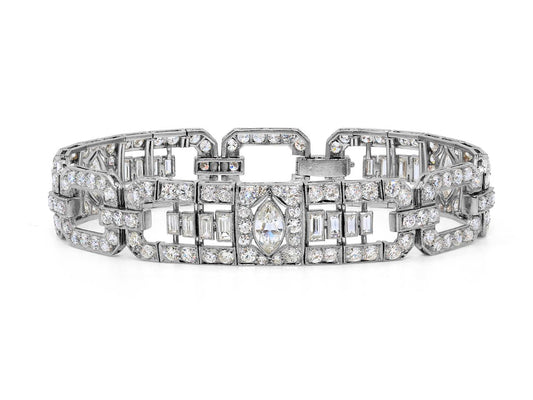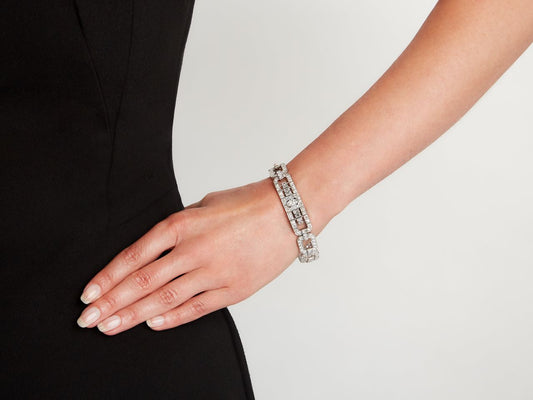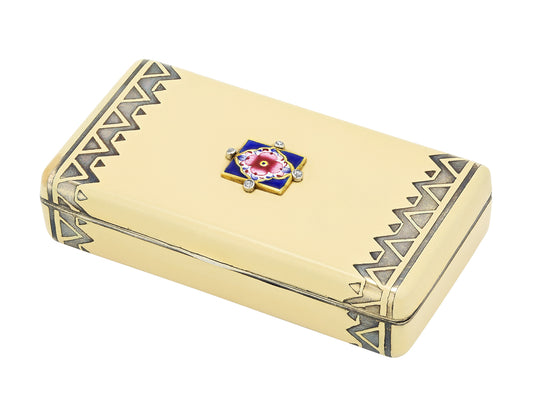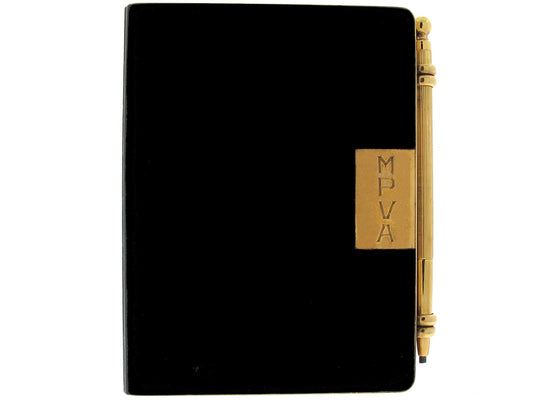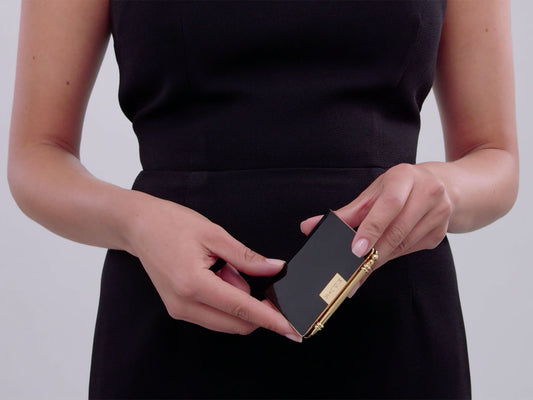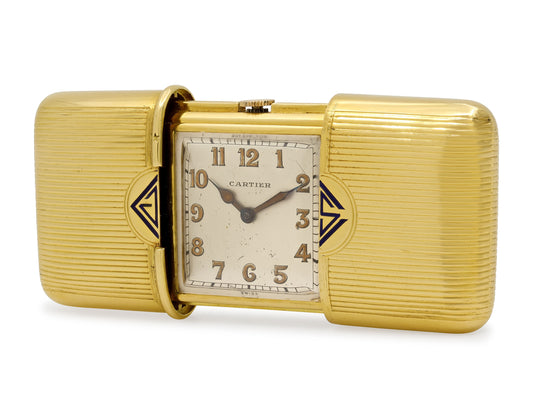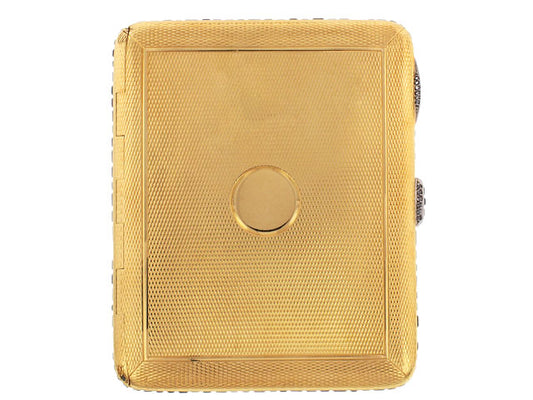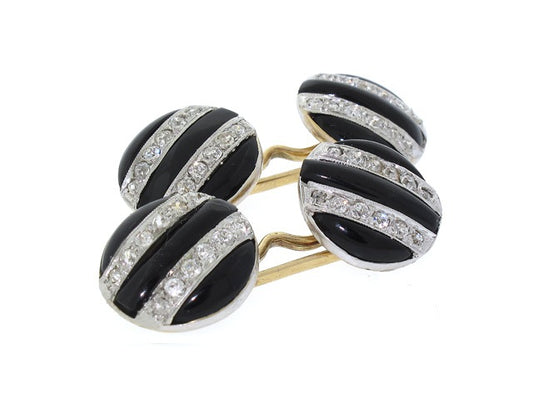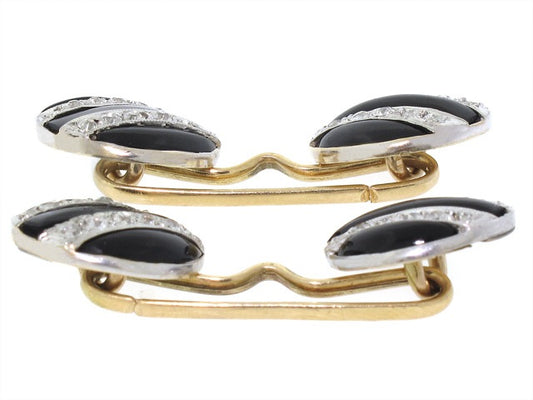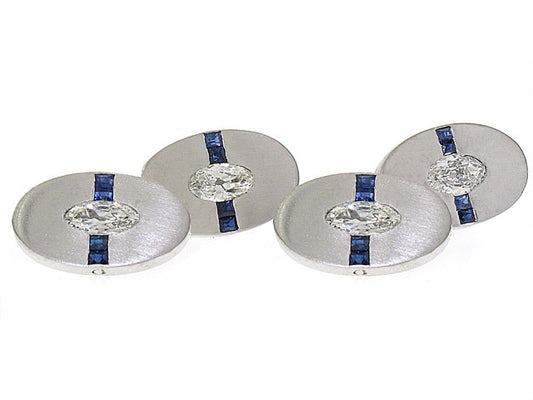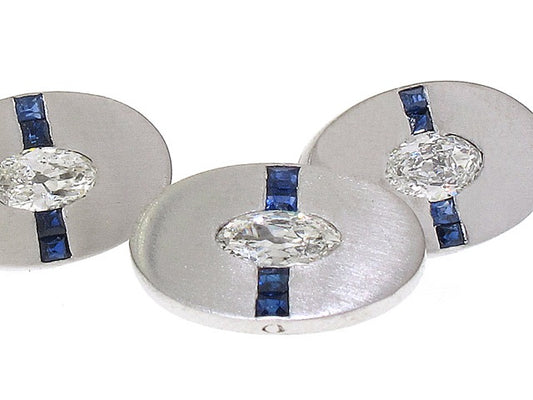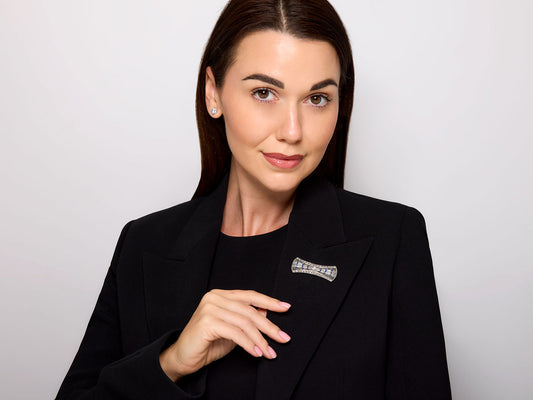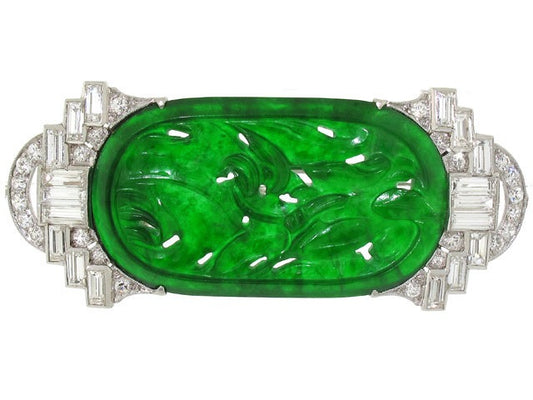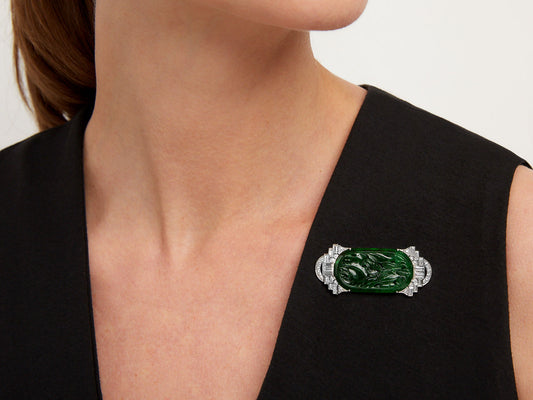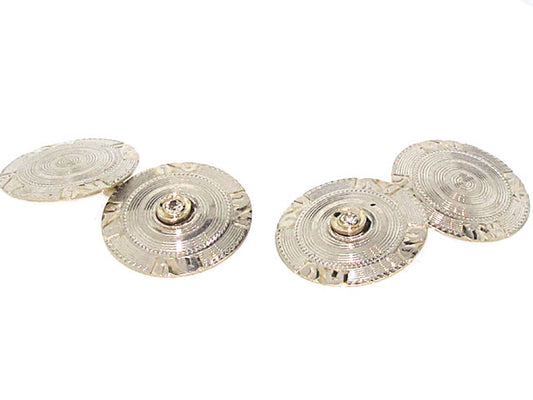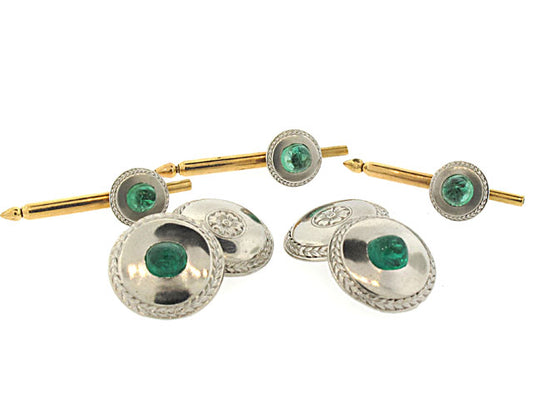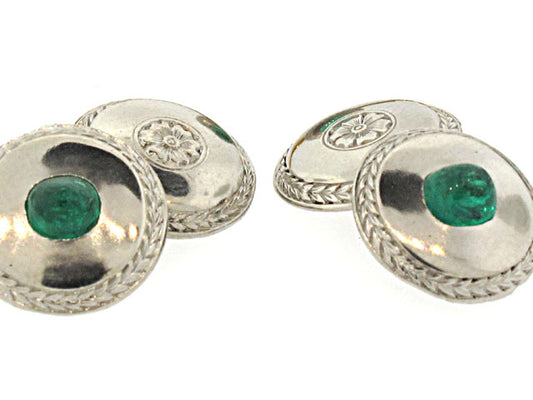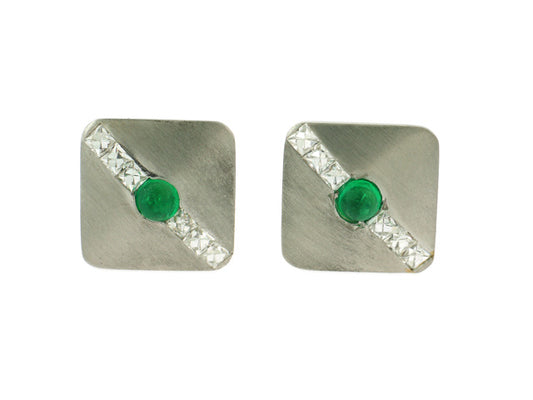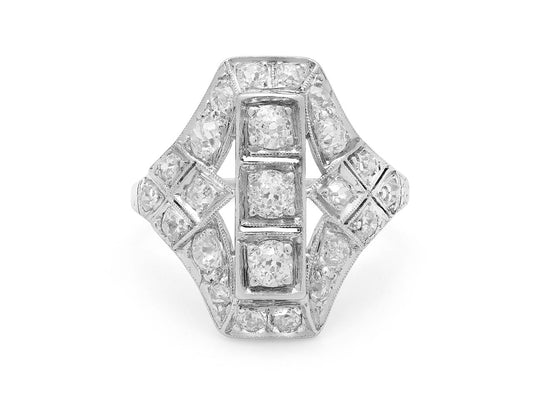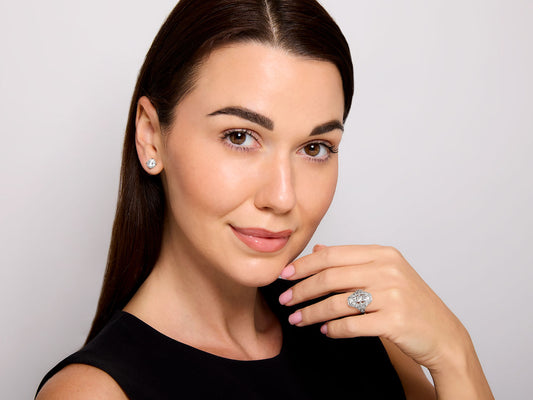-
Art Deco Emerald, Diamond and Onyx Bracelet in Platinum
BRC-520453Price $28,500PriceUnit price per -
Art Deco 'Key to My Heart' Charm Bracelet, in Platinum
BRC-520314Price $2,950PriceUnit price per -
Art Deco Diamond Double Clip Brooch in Platinum
PIN-520455Price $28,500PriceUnit price per -
Art Deco Diamond Bracelet in Platinum
BRC-505807Price $15,750PriceUnit price per -
Art Deco Diamond Bracelet in Platinum
BRC-504907Price $45,000PriceUnit price per -
Art Deco Diamond Bracelet in Platinum
BRC-505200Price $9,950PriceUnit price per -
Art Deco Tutti Frutti Brooch in Platinum
PIN-512086Price $22,500PriceUnit price per -
Art Deco Diamond and Multi-Gemstone Floral Pendant Necklace in Platinum
NEC-511269Price $8,450PriceUnit price per -
Art Deco Diamond and Jade Earrings in Platinum
EAR-510011Price $6,150PriceUnit price per -
Art Deco Diamond Jabot Pin in Platinum
PIN-503888Price $4,450PriceUnit price per -
Art Deco Diamond Tassel Earrings in Platinum
EAR-519235Price $24,500PriceUnit price per -
Art Deco Diamond Double Clip Brooch in Platinum
PIN-518724Price $17,500PriceUnit price per -
Art Deco Transitional Cut Diamond Bar Brooch in Platinum
PIN-515175Price $3,950PriceUnit price per -
Waslikoff Art Deco Diamond Rivière Necklace in Platinum
NEC-518373Price $14,500PriceUnit price per -
Art Deco Ruby and Diamond Brooch in Platinum
PIN-518131Price $8,500PriceUnit price per -
Art Deco Emerald Cut Diamond Ring, 1.32 carat H/VS2, in Platinum
RNG-517582Price $6,450PriceUnit price per -
Mellerio dits Meller Art Deco Diamond Brooch in Platinum
PIN-517543Price $9,250PriceUnit price per -
Black Starr & Frost Art Deco Onyx and Diamond Dress Set in Platinum
MEN-515855Price $5,250PriceUnit price per -
Beladora 'Reimagined' Art Deco Star Ruby and Diamond Earrings in Platinum
EAR-517072Price $11,500PriceUnit price per -
Art Deco Diamond Ring, 1.05 carat, in Platinum
RNG-516078Price $4,950PriceUnit price per -
Art Deco Diamond Lorgnette in Platinum
NEC-513368Price $2,450PriceUnit price per -
Art Deco Diamond Bar Brooch in Platinum
PIN-513558Price $3,950PriceUnit price per -
Art Deco Emerald and Diamond Bracelet in Platinum
BRC-514145Price $39,500PriceUnit price per -
Art Deco Diamond and Onyx Circle Pin in Platinum
PIN-513907Price $1,350PriceUnit price per -
Art Deco Soccer Player Diamond and Ruby Pendant in Platinum
NEC-513990Price $2,450PriceUnit price per -
Art Deco Three Row Emerald and French-cut Diamond Bracelet
BRC-513877Price $24,500PriceUnit price per -
Art Deco Diamond, Onyx and Crystal Dress Set in 18K Gold
MEN-513658Price $4,450PriceUnit price per -
French Art Deco Crystal, Diamond and Onyx Dress Set in 18K Gold
MEN-512837Price $4,150PriceUnit price per -
Art Deco Diamond Watch in Platinum
WAT-513431Price $2,450PriceUnit price per -
Art Deco Old Mine Brilliant Cut Diamond Ring, 0.56 carat E/SI-1, in Platinum
RNG-513410Price $2,950PriceUnit price per -
Art Deco Diamond Ring in Platinum
RNG-513155Price $1,950PriceUnit price per -
Art Deco Diamond Brooch in Platinum
PIN-513143Price $8,500PriceUnit price per -
Cartier Art Deco Black Onyx, Enamel and Diamond Desk Clock
ACC-512537Price $85,000PriceUnit price per -
Art Deco Diamond Eternity Band in Platinum
RNG-512558Price $1,450PriceUnit price per -
Art Deco Burma Unheated Ruby, 1.63 carat, and Diamond Ring in Platinum
RNG-512482Price $8,450PriceUnit price per -
Art Deco Transitional Cut Diamond, 1.08 carat, and Sapphire Ring in Platinum
RNG-512432Price $9,750PriceUnit price per -
Art Deco Star Ruby and Diamond Double Clip Brooch in Platinum
PIN-505204Price $12,500PriceUnit price per -
Art Deco Diamond Solitaire Ring, 1.62 carat F/SI-1, in Platinum
RNG-511918Price $18,500PriceUnit price per -
Art Deco Diamond Bracelet in Platinum
BRC-505521Price $11,500PriceUnit price per -
Art Deco Diamond Ring, 2.28 Carat J/VS-2, in Platinum
RNG-511929Price $22,500PriceUnit price per -
Art Deco Emerald and Diamond Bracelet in Platinum
BRC-503176Price $21,500PriceUnit price per -
Art Deco Emerald and Diamond Bracelet in Platinum
BRC-511854Price $19,500PriceUnit price per -
Art Deco Diamond Watch in Platinum
WAT-511622Price $22,500PriceUnit price per -
Art Deco Jade and Diamond Ring in Platinum
RNG-510547Price $3,500PriceUnit price per -
Art Deco Transitional Cut Diamond Ring in Platinum
RNG-511346Price $10,950PriceUnit price per -
Art Deco Sapphire Dress Set in 14K Gold and Platinum
MEN-503558Price $6,450PriceUnit price per -
Art Deco Diamond Ring in 14K White Gold
RNG-510633Price $750PriceUnit price per -
Art Deco Sapphire and Diamond Ring in Platinum
RNG-510546Price $1,200PriceUnit price per -
Art Deco Diamond Ring in Platinum
RNG-505159Price $5,950PriceUnit price per -
Art Deco Ruby and Diamond Double Clip Brooch in Platinum
PIN-501570Price $21,500PriceUnit price per -
Art Deco Diamond Brooch/Pendant in Platinum
PIN-510484Price $19,500PriceUnit price per -
Art Deco Bloodstone and Diamond Dress Set in 18K and 14K Gold
MEN-510330Price $4,850PriceUnit price per -
Art Deco Diamond Brooch in Platinum
PIN-501145Price $11,600PriceUnit price per -
Art Deco Garnet and Diamond Brooch in Platinum
PIN-500808Price $3,750PriceUnit price per -
Art Deco Diamond and Natural Seed Pearl Watch in Platinum
WAT-504904Price $9,550PriceUnit price per -
Art Deco Sapphire Bead and Seed Pearl Bracelet in 14K
BRC-503453Price $3,650PriceUnit price per -
Art Deco Emerald and Diamond Brooch in Platinum
PIN-500269Price $6,950PriceUnit price per -
Art Deco Diamond Brooch in Platinum
PIN-500270Price $12,650PriceUnit price per -
Art Deco 0.62 carat I/VS-1 Diamond Solitaire Ring in Platinum
RNG-509610Price $2,850PriceUnit price per -
Art Deco Natural Saltwater Pearl and Diamond Pin in Platinum and White Gold
PIN-509690Price $3,850PriceUnit price per -
Cartier Art Deco Gold Box with Sapphires in 18K Gold
ACC-509293Price $22,500PriceUnit price per -
Art Deco Diamond Briolette Pendant in Platinum
NEC-503474Price $37,500PriceUnit price per -
Art Deco Diamond Bracelet in Platinum
BRC-501082Price $23,650PriceUnit price per -
Art Deco Diamond and Synthetic Sapphire Bracelet in Platinum
BRC-509453Price $5,100PriceUnit price per -
Art Deco Diamond Ring in Platinum
RNG-500807Price $3,850PriceUnit price per -
Cartier Art Deco Enamel Powder Compact Box in Silver
ACC-509326Price $4,500PriceUnit price per -
Art Deco Crystal, Diamond and Onyx Brooch in Platinum
PIN-509238Price $3,950PriceUnit price per -
Art Deco Diamond Fox Glove Flower Brooch in Platinum
PIN-506314Price $3,950PriceUnit price per -
Tiffany & Co. Art Deco Cigarette Box in 14K Gold
ACC-506051Price $20,500PriceUnit price per -
Charlton & Co. Art Deco Eight Day Desk Clock
ACC-505318Price $9,450PriceUnit price per -
Art Deco Diamond Bracelet in Platinum
BRC-504908Price $27,950PriceUnit price per -
Cartier Art Deco Enamel Box in 18K and Silver
ACC-504813Price $5,150PriceUnit price per -
Exceptional Cartier Art Deco Writing Journal and Pencil in 18K
ACC-504784Price $9,650PriceUnit price per -
Movado for Cartier Art Deco 'Ermeto' Clock in 18K Gold
ACC-504594Price $9,450PriceUnit price per -
Art Deco Sapphire and Diamond Cigarette Case in 18K
ACC-504496Price $24,500PriceUnit price per -
Art Deco Onyx and Diamond Cufflinks in Platinum and 14K
MEN-504181Price $3,850PriceUnit price per -
Art Deco Sapphire and Antique Marquise-cut Diamond Cufflinks in Platinum
MEN-504172Price $3,850PriceUnit price per -
Art Deco Diamond and Sapphire Brooch in Platinum
PIN-503603Price $4,950PriceUnit price per -
Art Deco Carved Jadeite and Diamond Brooch in Platinum
PIN-503566Price $14,900PriceUnit price per -
Art Deco Crystal and Diamond Dress Set in 14K and Platinum
MEN-503557Price $6,650PriceUnit price per -
Art Deco Crystal and Diamond Brooch in Platinum
PIN-503484Price $8,550PriceUnit price per -
Art Deco Diamond and Sapphire Bow Brooch in Platinum
PIN-502858Price $3,950PriceUnit price per -
Art Deco Sapphire and Diamond Cufflinks in Platinum
MEN-502354Price $2,950PriceUnit price per -
Art Deco Diamond Cufflinks in Platinum
MEN-502353Price $2,850PriceUnit price per -
Art Deco Emerald Dress Set in Platinum
MEN-502352Price $4,450PriceUnit price per -
Art Deco Emerald and French-cut Diamond Cufflinks in Platinum
MEN-500864Price $4,000PriceUnit price per -
Art Deco Diamond Ring in Platinum
RNG-500783Price $3,450PriceUnit price per
FAQs
What is Art Deco style jewelry?
Art Deco jewelry, which emerged in the 1920s and 1930s, is a distinctive style characterized by geometrically sophisticated designs and the use of luxurious material, typically platinum, set with diamonds, emeralds, rubies and sapphires contrasted with more uncommon semi-precious materials such as carnelian and black onyx. Incorporating striking contrasts of color, pattern and motifs inspired by ancient civilizations such as Egypt, the art deco period reflected the spirit of the Jazz Age, embodying glamour, innovation, and the optimism of a rapidly modernizing world. Jewelers embraced new cutting techniques and materials, creating fanciful pieces with sharp angles, stepped forms, and dramatic contrasts between light and dark gemstones.
Deco pieces are highly sought after by collectors today for their distinctive, recognizable style and exceptional craftsmanship. Notable deco designs include Cartier’s iconic Tutti Frutti bracelet, first created in the 1920s, intertwining mult-colored cabochon and cut gemstones with diamond vines and black onyx accents. Van Cleef & Arpels introduced their Mystery Set technique in the 1930s, threading rubies and sapphires along hidden platinum tracks creating the illusion of gems floating without visible means of support. Many important art deco pieces owned by wealthy and discerning collectors such as Marjorie Merriweather Post, Gloria Swanson and others are now in museum collections such as the Smithsonian and Victoria and Albert and those in circulation consistently command the very highest prices at auction and resale.
How does Beladora verify the authenticity of a piece?
Authenticating pieces of jewelry requires more nuanced expertise. Many thousands of pieces of jewelry have passed through our hands for over 40 years from every era and every maker. This familiarity enables us to know what a piece should look and feel like and if it has the expected quality of material and workmanship, the accurate makers marks and the correct signature in all the right places. Indeed, one of the easiest ways non-experts can be fooled is to assume a designer piece of jewelry is truly by that maker as pieces by commercial manufacturers are often outright fakes or signed fraudulently by a third party.
In practice, we first look at the front and back of a bracelet, ring or brooch, turning it over in our hands to see that the workmanship on the reverse is just as fine as the detail on the front. Using the jeweler’s important tool, the loupe, we look carefully at many different touchpoints including the precision with which the diamonds are mounted in their settings, the manner in which gold or platinum links are connected to each other, the quality of the azuring, a most difficult and refined aspect of metalwork, the fineness of the material and we look for flawless polish.
If we have any doubts whatsoever as to authenticity, we submit the piece to the firm itself, be it Cartier, Van Cleef & Arpels, Verdura, David Webb and others. We also request the original bill of sale, box and papers for those items most commonly faked such as Cartier Love brackets and VCA Alhambra pieces. And just as banks know their customers, we, too, ensure we know enough about our clients to assure ourselves of their ownership and provenance.
Our team of GIA-certified jewelry experts has such a well-regarded reputation in the international jewelry industry that we are frequently called upon to advise auction houses, appraisers and other dealers in matters of authenticity and value.


